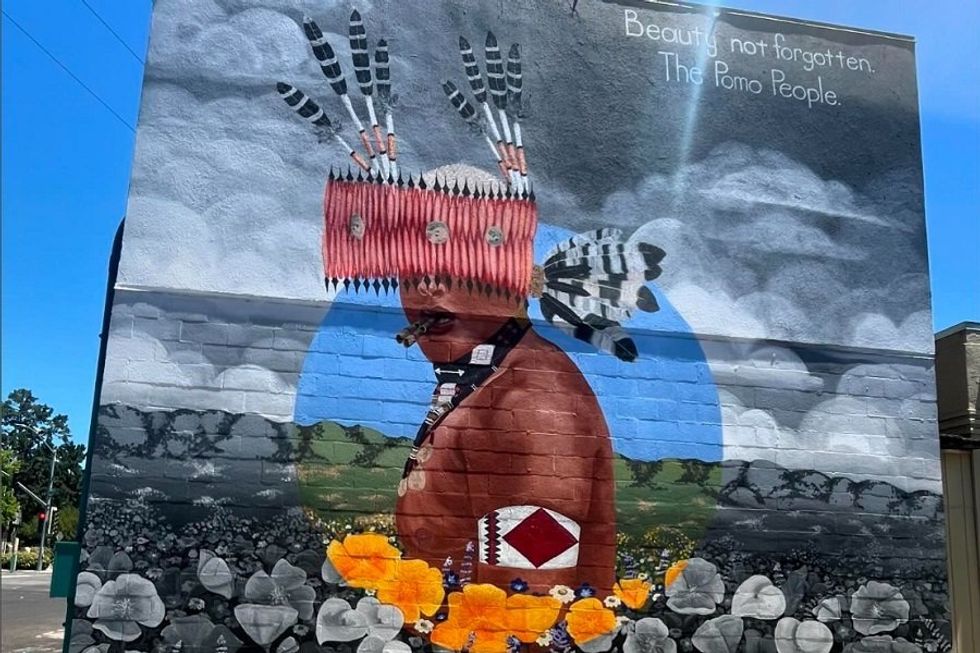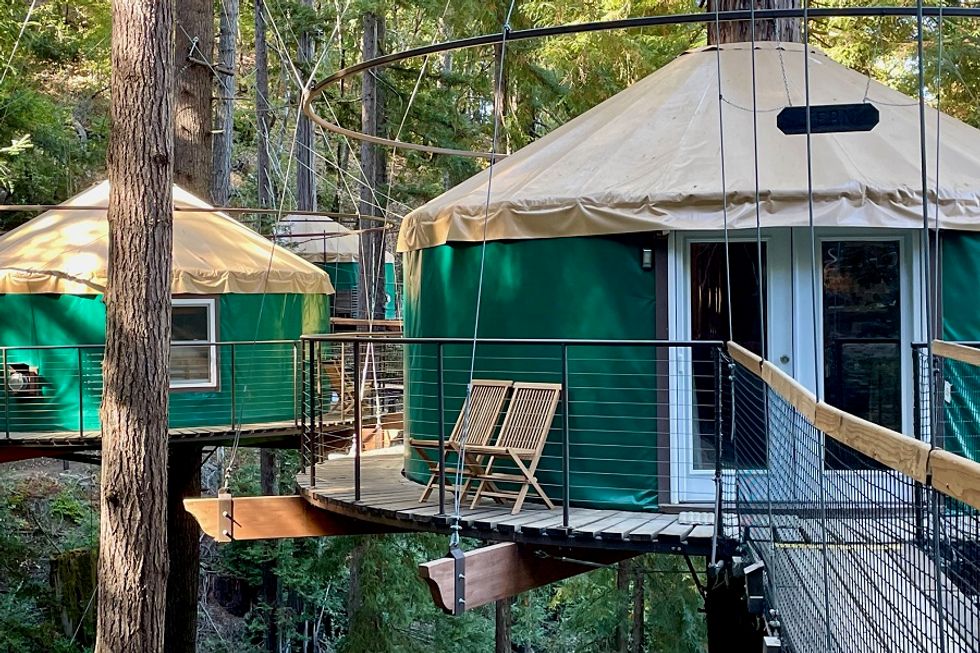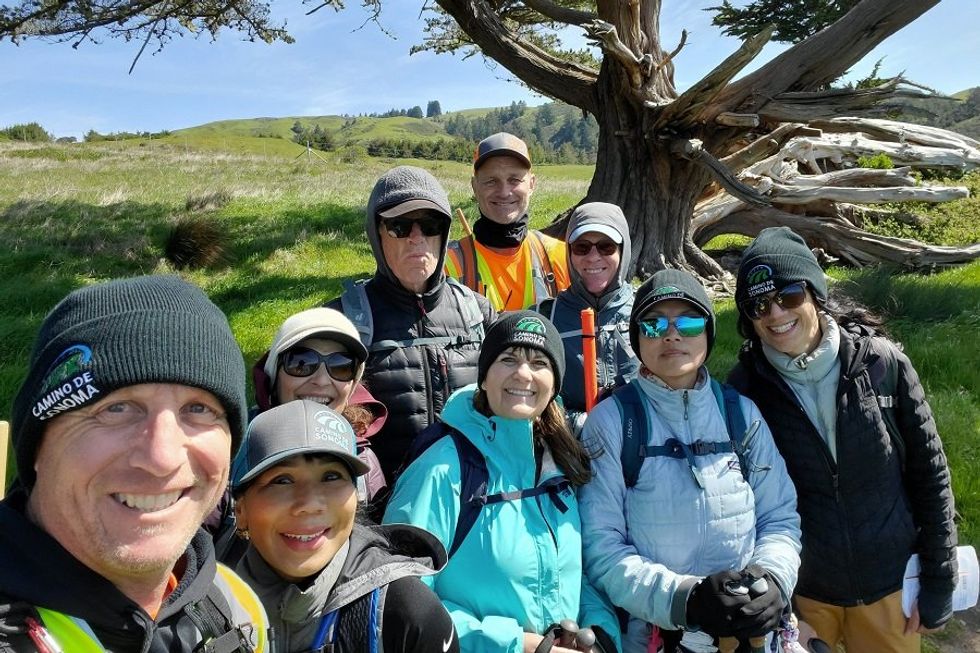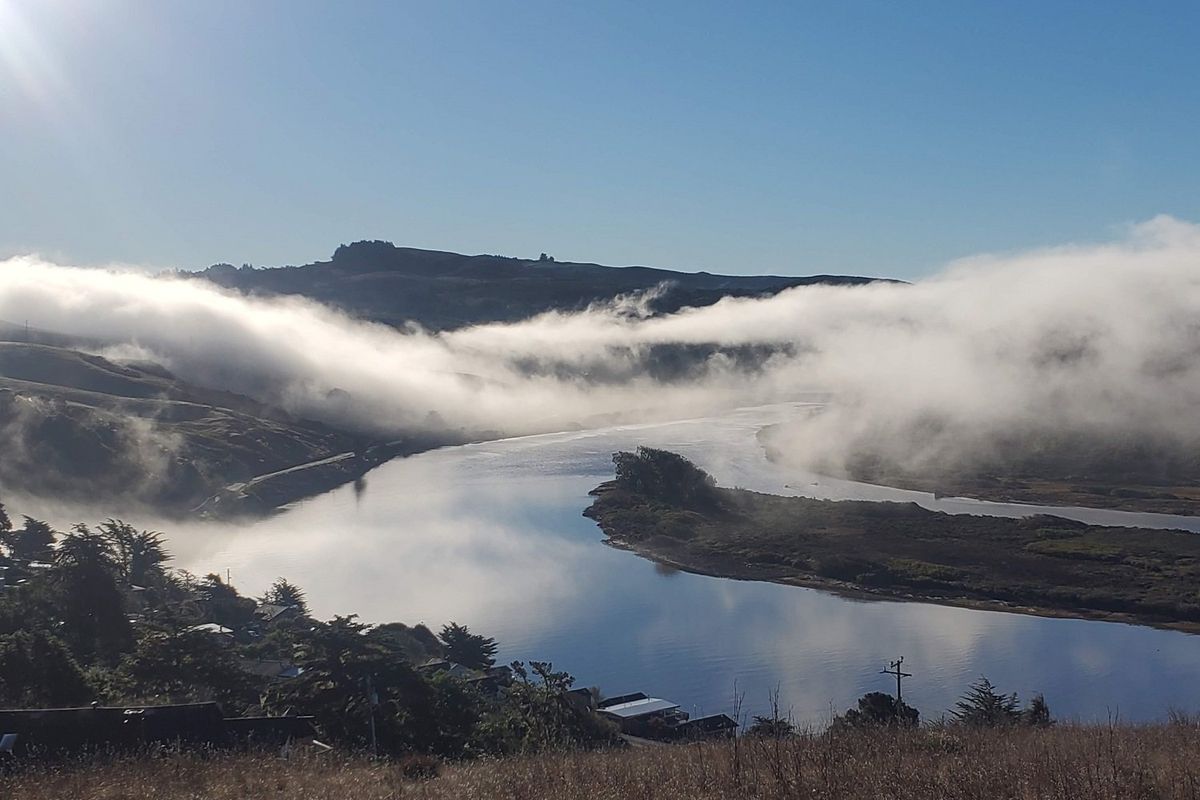The forest breathes in and out, pulsing with the rhythm of our steps. We listen but do not speak. For an entire mile there are only the sounds of birds and insects, the soft hush of our boots on the trail’s redwood-leaf carpet.
Like Spain’s Camino de Santiago, the Camino de Sonoma, a 75-mile trail extending across Sonoma County from the Mission San Francisco Solano to coastal Fort Ross, is a path of healing—both for the walkers and the communities and ecosystems through which they walk.
The trail encapsulates the county’s story, one of Indigenous homeland and heritage decimated by European hubris and American capitalism. Moments like this one, the “silent mile,” are invitations for mindfulness about the paths we choose going forward.
“Journeying side-by-side at a real human pace creates opportunities for connection with the community and the land,” says Adam Peacocke, steward and founding guide of the Camino de Sonoma.
A passage from the county’s inland valleys, through the Russian River corridor, to the Jenner headlands has always existed. Finding the way was more “archaeology than architecture,” says Camino co-founder Tony McCormick, a disentangling of the path from the patchwork of backcountry roads, suburban sprawl, and private land that now overlays it.
The trail’s six “stages” of 12.5 to 14.5 miles each begin at the historic Mission San Francisco Solano in Sonoma, the last in a long chain of Spanish-Catholic outposts at which local Indigenous tribes including the Miwok, Pomo, Patwin, and Wappo were forced into religious conversion and servitude. It continues north through Boyes Hot Springs and Glen Ellen, passing through vineyards on the way to Kenwood. Stage 2, from Kenwood to Santa Rosa, follows residential streets and the trails of Trione-Annadel State Park through ecosystems devastated by, and now recovering from, the 2017 Tubbs Fire.

The Camino’s most urban section is Stage 3, from Santa Rosa to Sebastopol, where hikers encounter four ancient Indigenous village sites within the modern city. From there it’s on to Occidental (Stage 4), followed by Jenner (Stage 5). The sixth and final stage travels along the coastal headlands and Highway 1 to Fort Ross, once the large Kashia Pomo village of Metini, but better known today as a Russian settlement, who began building there in 1812.
Trained volunteer guides lead small groups across the trail, completing the entire six-day route about every two weeks. Some walk the whole thing at once, passing the night at local inns and glampgrounds along the way. Others join up for a single day. You don’t have to hike with them, step-by-step guides on All Trails direct those who’d rather go it alone but, in many ways, going it alone defeats the Camino’s purpose. The 75-mile trail isn’t just a through hike, it’s a pilgrimage.
It’s on Stage 5 of the Camino that I meet its founders, a gorgeous section of trail that begins at Occidental, then winds through Sonoma Coast State Park and out to the Jenner Headlands. To make the early morning start time, I stay the night before in a well-appointed yurt in the Ewok-like village at Alliance Redwoods Sonoma Treehouse Adventures down the road. More than a mile of ziplines connect the treehouses, which hover 50 feet from the ground amid sky bridges and spiral staircases, back to the forest floor—the ideal way to return to earth after a gourmet breakfast has been delivered to your door.

There are six hikers at the morning circle, where the guides lead us in setting an intention for the day’s walk. There’s a spiritual element in the meeting, one I’ve been anxious about all week, but I’m relieved to find there’s no proselytizing or pressure to participate in a brief Christian prayer. When I ask Peacocke about it later, he says my response is not uncommon; only some pilgrims engage with the religious aspects. The diversity of those who walk the Camino, he assures me, enriches the experience. “We want everyone to feel valued and included. Who you are, your voice, your purpose, your intention is valuable.”
Stage 5 is the most ecologically diverse section of the trail, one still scarred by the generations of settlers who mined its forests for timber. As we pass through redwood groves, McCormick explains how a century of fire policies that rejected the controlled burns used by local tribes to regenerate the ecosystem has left the landscape vulnerable to devastating wildfires. On a slope, we stop to see how the forest has recovered after a landslide felled it just a few years back.
Here, and at every phase of the Camino de Sonoma, the guides flip the typical historical script. Instead of interpreting the Camino through its Spanish, Russian, and American past, they put its Indigenous history and heritage first. That, says Dino Franklin, Jr., tribal chairman of the Kashia Band of Pomo Indians and board member of the Camino de Sonoma, makes the Camino special. “We know our stories,” he says. “But we were left to the public school system to teach us [U.S.] history and not our own. The Camino is changing that in such a big way.”
Regularly consulting and engaging with the tribes across whose homelands they are walking, Peacocke and McCormick see the trail as a catalyst for decolonization, reconciliation, and community connection. Not all members of Sonoma’s local tribes are so sure, according to Franklin, but he hopes they will recognize that the Camino’s founders are genuine in their intent. A group of Native youth will walk the third section of the trail with him next week and some may eventually become guides, themselves.

But as much as the Camino is a place for engaging with stories of resistance, the journey is also a personal one. Of the hundreds who have joined the pilgrimage over the last five years, many are grieving or processing a major change in their lives. Others are there to learn the stories and meet new people in an organic way. Some just want to hike.
Even those who don’t expect to are likely to finish their walk along the Camino de Sonoma more buoyant and connected to their fellow travelers. I feel it too, the comradery of a shared journey, as our group files along the last of its 14.5 miles over the mouth of the Russian River and to our end point at Jenner’s tiny coastal hamlet.
That’s part of the value of walking the land, says Franklin. “When we walk with purpose and acknowledge that what we’re doing is with intent, hopefully it will bring healing.”
// RSVP to join a guided hike on the Camino de Sonoma (Free); caminodesonoma.com
Alliance Redwoods Sonoma Treehouse Adventures, 6250 Bohemian Hwy (Occidental), sonomacanopytours.com





















